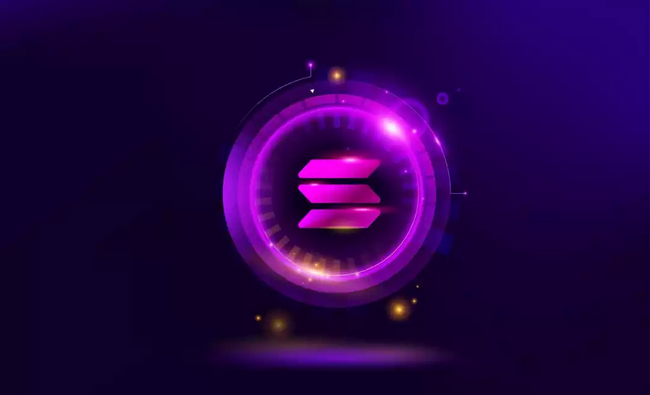-
 Bitcoin
Bitcoin $103,044.5025
6.11% -
 Ethereum
Ethereum $2,190.3315
20.69% -
 Tether USDt
Tether USDt $1.0000
-0.03% -
 XRP
XRP $2.3163
8.84% -
 BNB
BNB $627.0081
4.03% -
 Solana
Solana $163.2697
10.66% -
 USDC
USDC $1.0001
0.00% -
 Dogecoin
Dogecoin $0.1966
14.17% -
 Cardano
Cardano $0.7655
14.20% -
 TRON
TRON $0.2569
3.14% -
 Sui
Sui $4.0086
20.27% -
 Chainlink
Chainlink $15.7917
14.00% -
 Avalanche
Avalanche $22.0343
12.67% -
 Stellar
Stellar $0.2900
11.30% -
 Shiba Inu
Shiba Inu $0.0...01430
11.76% -
 Bitcoin Cash
Bitcoin Cash $421.9353
10.57% -
 Hedera
Hedera $0.1949
11.03% -
 UNUS SED LEO
UNUS SED LEO $8.8420
0.91% -
 Toncoin
Toncoin $3.2040
6.10% -
 Hyperliquid
Hyperliquid $23.1495
10.01% -
 Litecoin
Litecoin $94.5603
5.73% -
 Polkadot
Polkadot $4.4425
11.97% -
 Monero
Monero $298.6990
5.41% -
 Dai
Dai $1.0001
0.00% -
 Bitget Token
Bitget Token $4.4922
6.22% -
 Ethena USDe
Ethena USDe $0.9999
-0.07% -
 Pepe
Pepe $0.0...01108
34.39% -
 Pi
Pi $0.6422
10.31% -
 Uniswap
Uniswap $6.0666
24.21% -
 Bittensor
Bittensor $421.3609
14.50%
can solana replace ethereum
Despite Solana's scalability and low fees, Ethereum's established developer ecosystem and widespread enterprise adoption give it a formidable advantage in the race to lead the blockchain industry.
Nov 06, 2024 at 09:57 pm

Can Solana Replace Ethereum: A Comprehensive Analysis
Introduction
The blockchain industry has witnessed the emergence of numerous platforms vying for dominance. Among these, Solana and Ethereum stand out as two prominent contenders. While Ethereum has long been the industry leader, Solana has gained traction as a potential challenger due to its high throughput and low transaction fees. This article delves into the strengths and weaknesses of both platforms, exploring whether Solana has the potential to displace Ethereum as the leading blockchain for decentralized applications.
1. Scalability: Solana's Edge
Scalability is a crucial factor in assessing a blockchain's ability to handle increasing demand. Solana boasts an impressive throughput of thousands of transactions per second, significantly outpacing Ethereum's current capacity of around 15 transactions per second. Solana achieves this scalability through a combination of its Proof-of-History consensus mechanism and parallel processing, allowing it to process multiple transactions simultaneously.
2. Transaction Fees: A Solana Advantage
Transaction fees on Ethereum have become a significant pain point for users, often reaching exorbitant levels during periods of high network congestion. Solana, on the other hand, offers remarkably low transaction fees, averaging a fraction of a cent. This cost-effectiveness makes Solana more accessible to developers and users, reducing friction for adoption.
3. Smart Contract Capabilities: Ethereum's Maturity
While Solana offers impressive scalability and low fees, it lags behind Ethereum in terms of smart contract capabilities. Ethereum's Virtual Machine (EVM) has become the industry standard for developing and deploying smart contracts, providing a vast ecosystem of tools, frameworks, and resources. Solana, while offering its own smart contract language (Rust), faces an uphill battle in attracting developers familiar with the EVM.
4. Interoperability: Ethereum's Head Start
Interoperability is essential for the growth of the blockchain ecosystem. Ethereum's first-mover advantage has resulted in a wide array of bridges, interoperability protocols, and projects connecting it to other blockchains. Solana, on the other hand, is still in its early stages of development in this area, limiting its connectivity with external platforms.
5. Decentralization: A Trade-Off
Centralization is a concern for any blockchain, as it can compromise the network's security and resilience. Solana utilizes a Proof-of-Stake (PoS) consensus mechanism, which raises questions about decentralization due to the potential for centralization of stake ownership. Ethereum's Proof-of-Work (PoW) mechanism, while more energy-intensive, offers a higher level of decentralization.
6. Developer Ecosystem: Ethereum's Established Lead
Ethereum's established developer ecosystem remains one of its key strengths. The EVM's popularity has attracted a large and vibrant community of developers, resulting in a wealth of documentation, tools, and tutorials. Solana, while gaining momentum, still lags in terms of developer support and resources, potentially hindering its adoption among developers.
7. Enterprise Adoption: Ethereum's Foray
Enterprise adoption is a key indicator of a blockchain's potential for real-world applications. Ethereum has made significant progress in this area, with several Fortune 500 companies exploring and implementing Ethereum-based solutions. Solana, while relatively new, is still gaining traction in the enterprise sector and has yet to demonstrate the same level of adoption.
8. Regulatory Environment: A Future Landscape
The regulatory landscape for cryptocurrencies and blockchain technology is constantly evolving, adding uncertainty to the industry's future. Ethereum's established position and widespread adoption may provide it with an edge in terms of navigating regulatory headwinds, as governments and regulators become more involved in the blockchain space.
Conclusion
Whether Solana can replace Ethereum as the leading blockchain for decentralized applications remains a subject of ongoing debate. While Solana offers impressive scalability and low fees, Ethereum's maturity, smart contract capabilities, interoperability, developer ecosystem, and enterprise adoption provide it with a significant advantage. The future of these platforms will depend on their ability to address scalability, security, and regulatory concerns, as well as their capacity to foster a vibrant developer community and attract enterprise adoption.
Disclaimer:info@kdj.com
The information provided is not trading advice. kdj.com does not assume any responsibility for any investments made based on the information provided in this article. Cryptocurrencies are highly volatile and it is highly recommended that you invest with caution after thorough research!
If you believe that the content used on this website infringes your copyright, please contact us immediately (info@kdj.com) and we will delete it promptly.
- As data reveals deep inequality among TRUMP coin holders, Anthony Scaramucci warns of potential corruption linked to Donald Trump's crypto activity.
- 2025-05-09 08:05:13
- The United States Senate has failed to advance the GENIUS Act
- 2025-05-09 08:05:13
- As Bitcoin Struggles to Hold Momentum, a New Ethereum-Based Token That Mirrors BTC's Trajectory Is Gaining Traction
- 2025-05-09 08:00:25
- The Casino Review Expert Team Ranks JACKBIT Among The Best Online Casinos For 2025
- 2025-05-09 08:00:25
- Ethereum (ETH) is now highly devalued compared to Bitcoin, the first time since 2019.
- 2025-05-09 07:55:14
- ONE Gas Inc. Announces Public Offering of 2.5 Million Shares of Common Stock
- 2025-05-09 07:55:14
Related knowledge

What is Ethereum’s Slashing mechanism and how to punish malicious behavior?
Feb 20,2025 at 03:08am
Key PointsOverview of slashingDifferent types of slashing in EthereumIncentives and consequences of slashingIdentifying and reporting slashed validatorsOngoing discussions and potential improvementsEthereum's Slashing Mechanism: Punishing Malicious BehaviorEthereum's slashing mechanism is an essential tool for ensuring network security and punishing mal...

What is the verifier node of Ethereum and how to become a verifier?
Feb 19,2025 at 06:00pm
The Verifier Node of Ethereum: A Comprehensive GuideKey Points:What is a Verifier Node?How to Become a Verifier NodeResponsibilities and Rewards of a Verifier NodeMinimum Requirements for Becoming a Verifier NodePotential Difficulties in Running a Verifier Node1. What is a Verifier Node?A Verifier Node is an independent entity on the Ethereum network th...

What is Ethereum’s staking, and how to participate and earn money?
Feb 19,2025 at 04:37pm
Key Points:Understanding Ethereum's Staking MechanismSteps to Participate in StakingBenefits and Rewards of StakingSecurity and Risk ConsiderationsTechnical Requirements and Hardware OptionsPotential Challenges and Troubleshooting TipsFAQs on Ethereum StakingWhat is Ethereum's Staking?Proof-of-Stake (PoS) is a consensus mechanism used in blockchain netw...

What is Ethereum’s DAO (Decentralized Autonomous Organization) and how does it work?
Feb 20,2025 at 03:12am
Key PointsDefinition and Structure of a DAOGovernance and Decision-Making in DAOsBenefits and Use Cases of DAOsChallenges and Limitations of DAOsWhat is Ethereum's DAO (Decentralized Autonomous Organization) and How Does It Work?Definition and Structure of a DAOA Decentralized Autonomous Organization (DAO) is an innovative governance and management fram...

What is Ethereum's multi-signature wallet and how to improve security?
Feb 20,2025 at 02:18pm
Key Points:Understanding the Concept of a Multi-Signature WalletBenefits and Drawbacks of Multisig WalletsRequirements for Setting Up a Multisig WalletStep-by-Step Guide to Generating a Multisig WalletImplementing Strategies for Enhanced Security1. Understanding the Concept of a Multi-Signature WalletA multi-signature (multisig) wallet in the Ethereum e...

What is Ethereum's oracle and how to provide data for smart contracts?
Feb 21,2025 at 01:30am
Key Points:Understanding the concept of oracles in EthereumExploring different types of oraclesDetailed guide on how to provide data for smart contractsAddressing potential challenges and considerationsWhat is Ethereum's Oracle?Oracles are crucial components in the Ethereum ecosystem, enabling smart contracts to access real-world data and off-chain even...

What is Ethereum’s Slashing mechanism and how to punish malicious behavior?
Feb 20,2025 at 03:08am
Key PointsOverview of slashingDifferent types of slashing in EthereumIncentives and consequences of slashingIdentifying and reporting slashed validatorsOngoing discussions and potential improvementsEthereum's Slashing Mechanism: Punishing Malicious BehaviorEthereum's slashing mechanism is an essential tool for ensuring network security and punishing mal...

What is the verifier node of Ethereum and how to become a verifier?
Feb 19,2025 at 06:00pm
The Verifier Node of Ethereum: A Comprehensive GuideKey Points:What is a Verifier Node?How to Become a Verifier NodeResponsibilities and Rewards of a Verifier NodeMinimum Requirements for Becoming a Verifier NodePotential Difficulties in Running a Verifier Node1. What is a Verifier Node?A Verifier Node is an independent entity on the Ethereum network th...

What is Ethereum’s staking, and how to participate and earn money?
Feb 19,2025 at 04:37pm
Key Points:Understanding Ethereum's Staking MechanismSteps to Participate in StakingBenefits and Rewards of StakingSecurity and Risk ConsiderationsTechnical Requirements and Hardware OptionsPotential Challenges and Troubleshooting TipsFAQs on Ethereum StakingWhat is Ethereum's Staking?Proof-of-Stake (PoS) is a consensus mechanism used in blockchain netw...

What is Ethereum’s DAO (Decentralized Autonomous Organization) and how does it work?
Feb 20,2025 at 03:12am
Key PointsDefinition and Structure of a DAOGovernance and Decision-Making in DAOsBenefits and Use Cases of DAOsChallenges and Limitations of DAOsWhat is Ethereum's DAO (Decentralized Autonomous Organization) and How Does It Work?Definition and Structure of a DAOA Decentralized Autonomous Organization (DAO) is an innovative governance and management fram...

What is Ethereum's multi-signature wallet and how to improve security?
Feb 20,2025 at 02:18pm
Key Points:Understanding the Concept of a Multi-Signature WalletBenefits and Drawbacks of Multisig WalletsRequirements for Setting Up a Multisig WalletStep-by-Step Guide to Generating a Multisig WalletImplementing Strategies for Enhanced Security1. Understanding the Concept of a Multi-Signature WalletA multi-signature (multisig) wallet in the Ethereum e...

What is Ethereum's oracle and how to provide data for smart contracts?
Feb 21,2025 at 01:30am
Key Points:Understanding the concept of oracles in EthereumExploring different types of oraclesDetailed guide on how to provide data for smart contractsAddressing potential challenges and considerationsWhat is Ethereum's Oracle?Oracles are crucial components in the Ethereum ecosystem, enabling smart contracts to access real-world data and off-chain even...
See all articles





















































































